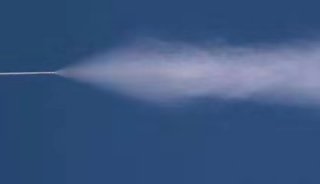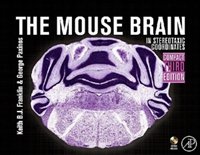Pathology and Autopsy of a mouse
Always fill-in a form for each mouse you find/submit and make as many notes as possible about his behaviour, health status or gross features.
Always weigh the mouse.
Almost invariably, a mouse found dead in the cage is unsuitable for microscopic and even gross analysis because:
Time from death is unpredictable
The temperature of the room favor rapid autolysis of the tissue, and then dehydration
Other mice chow the cadaver
A sick mouse should be euthanized as soon as possible, saving the tissue for analysis. If the mouse is dead is because has not been carefully inspected before.
If you really like to try, put on ice and fix in formalin (see below formalin fixation) immediately
if mouse is a newborn or < 1 wk of age:
euthanize by CO2 inhalation. Ask your Institute of Comparative Medicine (ICM) for procedures and facilities. Newborn mice are less sensible to CO2 narcosis.
Carefully verify that your mouse is dead, as taught by your ICM during the compulsory introductory course for researchers handling animals.
gently open up the abdomen longitudinally and the thorax along the mid-sternum up to the lower 2/3. Make a very superficial incision in the skull with a blade. Make sure that the formalin gets into the thorax and the abdomen, fix in formalin for 24 h at +4°C. (see below formalin fixation)
If mouse is alive or moribund and above one week of age:
euthanize by CO2 inhalation. Ask your Institute of Comparative Medicine (ICM) for procedures and facilities.
Carefully verify that your mouse is dead, as taught by your ICM during the compulsory introductory course for researchers handling animals.
get blood (easiest from the cut tip of the tail immediately after death: see also Flow protocol) and make 2 or more smears (see below storage of smears and slides). Blood can be taken from heart (this procedure must be done on mice to be sacrified immediately after), retroorbital vein plexi (with a capillary tube) or inferior vena cava. Use 22G needles. We use to exanguinate euthanized mice (see above) by cardiac puncture in order to
NOTE: intracardiac punture may spill blood in the peritoneum: if you need to analyze peritoneal cells, draw blood with a lateral approach in the thorax.
obtains serum for immunoglobulin analysis
better dissect the mouse and reduce artifactual staining of RBC by immunoperoxidase.
collect peritoneal cells if indicated.
fix the euthanized mouse on a flat surface (thick styrofoam box covers) with 22G and 24G needles inserted obliquely, spray with 70% ethanol in order to avoid fur all over the places, cut the skin from leg to leg and from perineum to chin in six easy steps (blue lines below). Pull apart the fur and expose peritoneum and ribs.

click to enlargeIn order get consistent results, you have to follow a routine, so you don't miss to sample every organ you need. You will prepare in advance three tubes: a 5 ml for lymphoid tissue, a 15 ml for solid organs and a 5 ml for the bone marrow, all round bottom and all conatining fixative. Cap the tubes and LABEL CAREFULLY.Procedures to sample lymphoid organs are detailed in the main menu of Mouse Pathology, in the popUp menu under "Removal of Lymphoid Organs".
click on the thumbnail to enlarge .
. 
Collect the following tissues in a tube containing buffered formalin, or the fixative of your choice: spleen, thymus, lymph nodes (mesenteric, inguinal, axillary, submandibular, paraspinal), Peyer's patches with some intestine attached on both sides (as many as you can), appendix, a small piece of liver.
Very small pieces can be tagged before fixation with India Ink, the deep black proteinaceus ink, used in Surgical Pathology or with Merthiolate. Do not use other type of ink (e.g. stamp pad etc.)
In a second tube collect a single block of heart, lung, trachea and mediastinum. You will gross these organs after fixation. Put also a kidney with adrenal attached and any organ that may be of your hematopathologic interest.
Collect the spine in a third tube. You will process this separately because of the need of decalcification.
After fixation (ideally 8 hours), collect all the lymphoid organs (you may like to include mediastinal nodes also: see below) in a cassette, wrapped in Kimwipe paper (squares of 1/8 of a regular Kimwipe) so you don't lose small pieces, and place in an embedding processor.
Detach each lung lobe from the block, detach the trachea together with mediastinal nodes, thyroid etc., slice the heart and kidney lengthwise on a frontal plane. Embed together in a cassette.
See example of the result of the procedure here below
Smears and touch preps can be stored at RT in a dry place for a limited amount of time. Storage in a refrigerator or freezer without proper handling (see below) is deleterious.
Within 48h from the preparation time, wrap the slides in Saran wrap, in couples, after having inserted a thread between the facing slide surfaces.
Seal the packet by folding 3 to 4 times the plastic foil around the slides and bending the edges under the packet. Label and store at -20°.
10% buffered formalin is the fixative of choice. Tissues can stay in formalin forever with good morphologic preservation. However, prolonged fixation affects immunodetection. The following protocol is intended for optimal immunoreactivity preservation.
Fix small pieces of tissues for minimum 6h (at RT), maximum 48 h (at +4°C). OPTIMAL 8-10h.
Then wash once (2-24h) with PBS and transfer to 70% ethanol for less than a week storage. Bigger specimens (e.g. whole mouse) need 24 to 48h fixation, one day in PBS and then two changes (6-12 hrs apart) of 70% ethanol for short and long term storage.
Store at RT once in ethanol.
For long term storage (> 1 week) of small pieces, soak the washed specimen in 30% sucrose in 0.1M PBS, freeze at -80°C once the pieces reach the bottom of the tube. A 1ml cryovial is enough.
This freezing protocol can be used for a whole mouse, provided that the mouse is opened up before fixation (including the skull), fixed for 24 hr in formalin, washed overnight with one PBS change, soaked in a large volume of sucrose and frozen in a 50ml tube with sucrose.
Get inguinal, axillary and submandibular lymph nodes.
Open the peritoneum, find the spleen under the stomach, gently detach it from the omentum. Place in cold PBS or medium.
Find the appendix and excise the tip.
Pull apart the large and small intestine exposing the mesentery.
Grab the sigma and visualize the mesenteric LN runnung toward the root of the mesentery. Excise it, together with a small piece of pancreas.
Carefully inspect the whole gut and excise as many Peters's Patches as possible, with some intestine attached.
Grab the liver across the falciform ligament under the diaphragm, together with the abdominal aorta and remove the liver in a single block at once. Weight the liver.
Trim a piece of liver as big as the spleen and put in cold PBS.
Remove one kidney.
Open the thorax along the midline up to the sternum, being gentle on top, pry open, visualize the thymus. Grab it right in the middle (isthmus), gently pull the thymus, detaching it from the mediastinum. Put in cold PBS.
Remove heart, lung and mediastinum en-block.
Remove the abdominal organs and cut out the spine.
Weigh the spleen, cut in half, make touch-preps on 3 or more labelled slides, put 1/2 in formalin, and 1/2 in a labelled cryotube (to be frozen). If the spleen is enlarged, make 5 or more touch-prep slides.
Get the thymus, make touch preps on 3 or more slides, put 1/2 in formalin, and 1/2 in a cryotube (to be frozen).
Freeze the tubes with spleen and thymus in liquid nitrogen directly. Store at -80°C
Fix spleen, thymus and liver (in the same tube) in formalin (see below formalin fixation).
Fix the whole mouse in formalin (see below formalin fixation)
Withe the mouse fixed and opened, start your routine (typical for the average mouse):




















